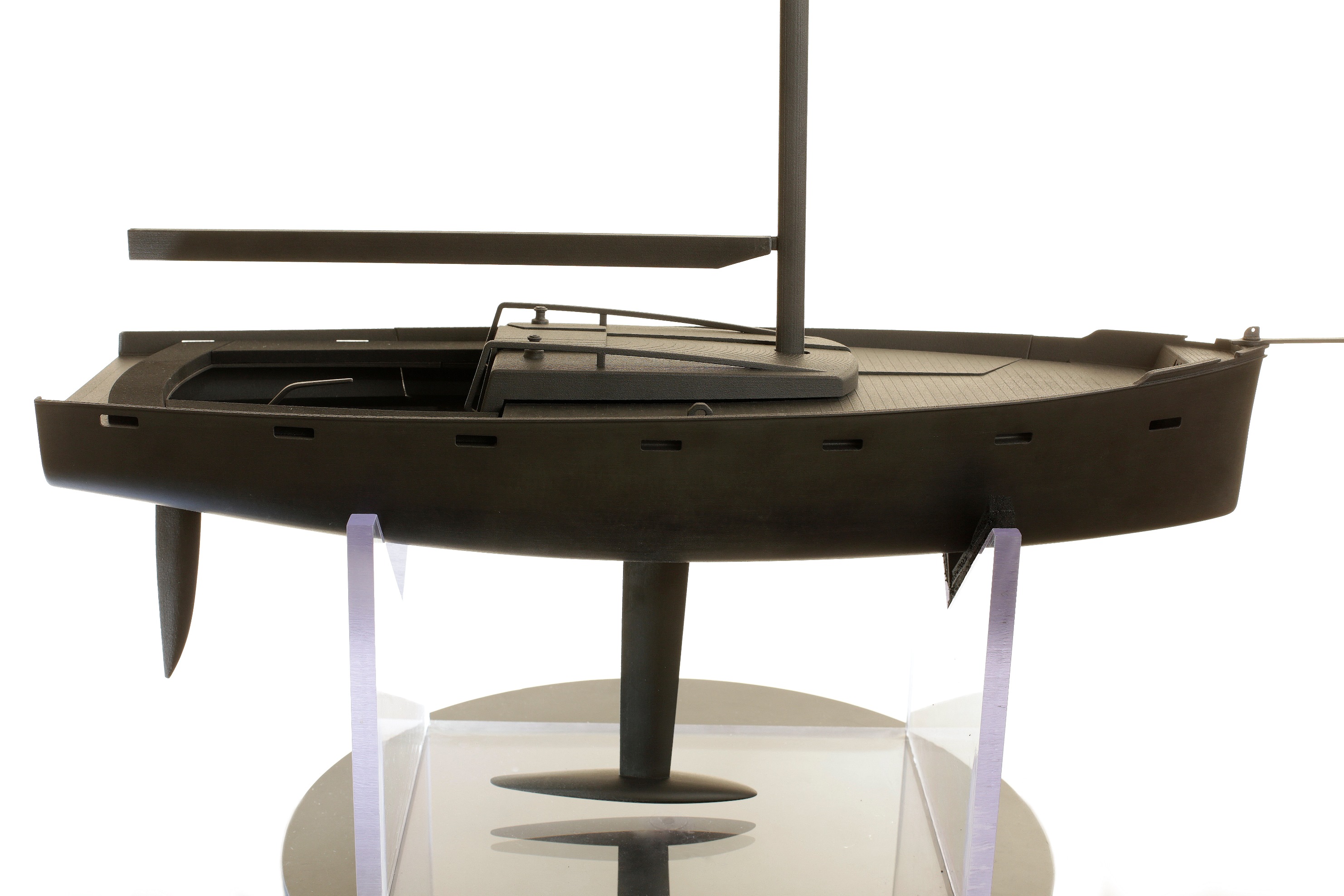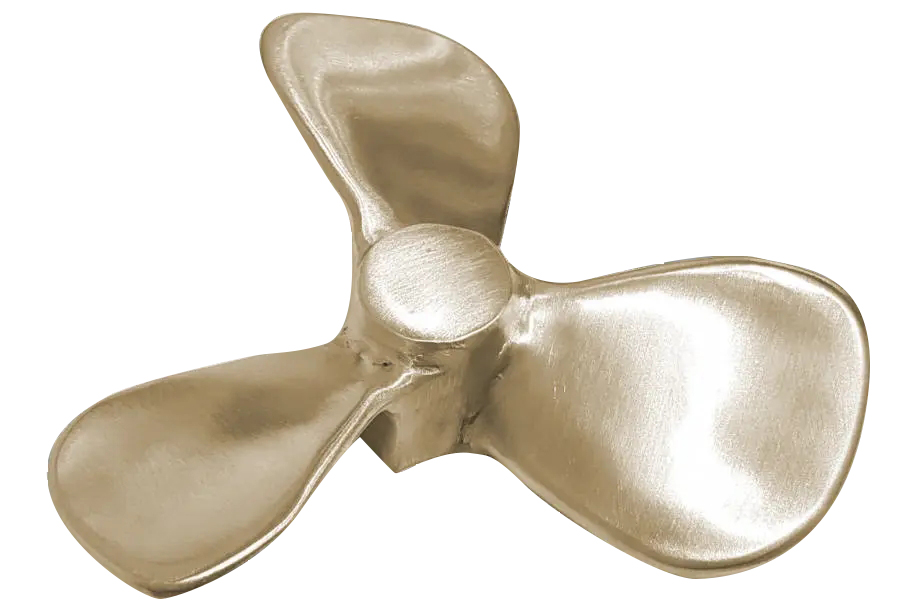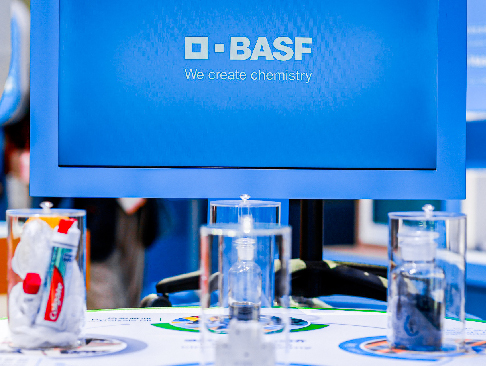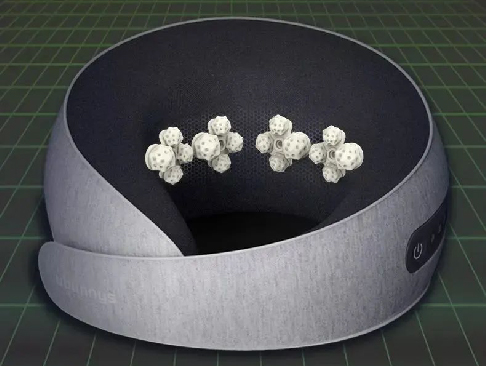

瑞典RISE研究院的增材制造研究科学家Emil Johansson刚刚发布了一个新项目,展示了功能齐全的全3D打印船(如上面的视频所示)。这是一连串项目的最新成果,该项目显示了基于笛卡尔或多轴机器人体系结构的新型大幅面挤出系统如何使3D打印船的工艺成为相当标准化的
A new project just published by Emil Johansson, Research Scientist Additive Manufacturing at RISE Research Institutes of Sweden, demonstrated a functional fully 3D printed boat (shown in the video above). This is the latest of a long string of projects that has shown how new large-format extrusion systems—either based on cartesian or multi-axis robotic architectures—are making the process of 3D printing boats a fairly standardized (or, at least, standardizable) practice.
在此应用案例中,研究人员于12月中旬在现场直播事件的同时,在瑞典西海岸测试了3D打印的摩托艇。3D打印船完美地处理了水。约翰逊说:“这是非凡合作努力的顶峰。”“打印小船是我和瑞典RISE研究院的同事LennyTönnäng,Jan Johansson和我多年来梦dream以求的事情。由达格·埃里克·托马森(Dag Eirik Thomassen)和拉斯·豪格里(Lars Haugli)领导的Cipax和Pioner游艇创新团队一起,我们决定实现这一目标。
In this application case, the researchers tested a 3D printed motorboat on the Swedish west coast in the middle of December, while live-streaming the event. The 3D printed boat handled the water perfectly. “This is the pinnacle of a remarkable collaborative effort,” Johansson said. “Printing a boat is something my colleagues Lenny Tönnäng, Jan Johansson and I at RISE Research Institutes of Sweden have dreamt of for many years. Together with an innovative team at Cipax and Pioner boats, led by Dag Eirik Thomassen and Lars Haugli, we decided to make it happen.”
在这种情况下,使用基于工业机器人的增材制造将船只本身进行3D打印,这项技术已经与ABB的Anders Spaak共同研究了多年。研究项目DiLAM的工作部分是由Vinnova,瑞典能源署和Formas通过战略创新计划Produktion2030资助的。
In this case, the boat itself was 3D printed in one piece using industrial robot based additive manufacturing, a technology that the researchers have been working on with Anders Spaak at ABB for several years. The work part of the research project DiLAM, funded by Vinnova, the Swedish Energy Agency and Formas through the strategic innovation program Produktion2030.
这是几年前开始的一连串项目中的最新项目,当时整个海洋和海运行业终于开始接受除一些基本原型设计之外的AM技术。
This is the latest in a long string of projects that began a few years ago, when the entire marine and maritime industries finally began to open up to AM technologies beyond some basic prototyping.
一切都从原型开始:Livrea Yacht是最早使用先进的Windform材料对新游艇设计进行3D打印原型的工作室之一。
It all started from prototyping: Livrea Yacht was one of the first studios to use advanced Windform materials to 3D print prototypes of new yacht designs.
从原型到3D打印船
From prototypes to 3D printing boats
最初,这是一家意大利工作室Livrea Yacht,它可能是第一个基于3D打印整条船的想法的工作室,基于使用AM进行新游艇设计原型的经验。Livrea创立了初创公司Ocore,在LEHVOSS和Autodesk的支持下,开发了一种能够在西西里岛进行3D打印整个帆船船体的机器人挤压技术。
In the beginning, it was Livrea Yacht, an Italian studio that was probably the first to envision the idea of 3D printing an entire boat, based on the experience of using AM for prototyping new yacht designs. Livrea founded the startup Ocore to develop a robotic extrusion technology capable to 3D print an entire sailboat hull in Sicily, with support from LEHVOSS and Autodesk.
他们在2018年底在3D打印整个帆船船体上的成功被缅因大学和ORNL在美国于几周前完成的一项更令人印象深刻的项目所掩盖。资金雄厚的美国机构使用Ingersoll的大型3D打印机,创建了世界上最大的整个3D打印船,该船目前总共拥有3项吉尼斯世界纪录。这次使用大型笛卡尔挤压系统对船进行3D打印,使用碳纤维增强的尼龙复合造粒材料。
Their success in 3D printing the entire sailboat hull in late 2018 was somewhat overshadowed by an even more impressive project that was completed just a few weeks before in the US, by the University of Maine and ORNL. Using Ingersoll’s massive 3D printer, the well-funded American institutions created the world’s largest entire 3D printed boat, which now holds a total of 3 Guinness World Records. This time the boat was 3D printed using a large cartesian extrusion system, using a carbon fiber reinforced nylon composite pelletized material.
然后是MAMBO,这是第一款使用连续纤维复合材料的全功能3D打印船,这一次也是由另一家意大利创业公司moi Composites开发的。在这种情况下,与Autodesk合作开发和设计的船是使用连续玻璃纤维复合热固性材料的多轴机器人挤压生产的。
Then came MAMBO, the first full and fully functional 3D printed boat using continuous fiber composite materials, this time, again, developed by another Italian startup called moi Composites. In this case, the boat, developed and designed in collaboration with Autodesk, was produced using multi-axis robotic extrusion of a continuous fiberglass composite thermoset material.
尽管在实现必要的成本效益和速度方面,连续纤维挤出工艺可能还差得远一些,但短纤维复合材料挤出系统现已证明在印刷非常大的结构。这是一项巨大的成就,现在看来,很明显,这将在未来几年中成为船舶制造行业中一种更广泛采用的技术。
While the continuous fiber extrusion process may still be a bit farther away in terms of achieving the necessary cost-efficiency and speed, chopped fiber composite extrusion systems have now been shown to be more than effective in printing very large structures, such as boat hulls, in a single run. This is a gigantic achievement and it now seems pretty clear that this will become a more widely adopted technology in the boat manufacturing industry in the years to come.

Moi Composites生产的MAMBO连续纤维3D打印船。
The MAMBO continuous fiber 3D printed boat by moi Composites.
直接从CAD建造一次性产品(例如船或小型游艇)的能力,而不必构建昂贵且耗时的模具(只需使用一次),可以立即带来明显的收益。另一方面,大幅面3D打印技术也可以为海洋和海洋模具制造带来好处。
The ability to build a one-off product such as a boat or small yacht, directly from CAD, without having to build expensive and time-consuming molds, that are only used once, can bring immediate and clear benefits. On the other hand, large format 3D printing technologies can bring benefits to marine and maritime mold-manufacturing as well.
另一家大型笛卡尔3D打印制造商Thermwood通过3D打印51英尺长的游艇船体模具的多个部分来证明了这一点,以展示单个船体模具如何足以制造更大的船只,例如游艇。测试模具的印刷部分由Techmer PM的碳纤维增强ABS制成。在这种情况下,选择ABS是因为其物理性能和与其他增强热塑性塑料相比相对较低的成本。
Another large format cartesian 3D printing manufacturer, Thermwood, has demonstrated this by 3D printing several sections from a 51-foot long yacht hull mold to show how a single hull mold may be sufficient to manufacture even larger vessels, such as yachts. The printed sections of the test mold were made of carbon fiber reinforced ABS from Techmer PM. In this case, ABS was chosen because of its physical properties and relatively low cost compared to other reinforced thermoplastics.
如果3D打印船(意为小型,完整尺寸的整船船)是3D打印最引人入胜的应用之一,那么AM在海事行业中最有价值的应用之一就是按需生产备件。对于海运业中的一些非常大的运营商而言,这正迅速成为一个非常有价值和高潜力的业务领域。
If 3D printing boats—intended as small, full size, entire boats—is among the most fascinating applications of 3D printing, one of the most valuable applications of AM in the maritime industry is on-demand production of spare parts. This is now rapidly becoming a very valuable and high-potential business segment for some very large operators in the maritime industry.
大型金属3D打印公司(例如AML3D和MX3D)已经发布了一些金属3D打印海事备件的第一个应用案例。两种技术均基于WAAM工艺,并且能够生产具有很高金属沉积速率的非常大的金属零件。其他举措还包括,总部位于新加坡的Tytus3D公司与部门运营商联合开展了一项行业项目合作,还贡献了自己的金属3D打印技术来开发海事应用。在澳大利亚,当地公司SPEE3D提供了其动态整合(冷吹粉末)金属3D打印技术,可用于为澳大利亚海军生产零件。
Large format metal 3D printing companies such as AML3D and MX3D have published some of the first application cases for metal 3D printed maritime spare parts. Both technologies are based on a WAAM process and are able to produce very large metal parts with very high metal deposition rates. Other initiatives saw Singapore-based firm Tytus3D also contribute its own metal 3D printing technology to develop maritime applications, in a joint industry project collaboration with segment operators. In Australia, local firm SPEE3D made its kinetic consolidation (cold blown powder) metal 3D printing technology available to produce spare parts for the Australian Navy.

使用SPEE3D技术印刷的铝青铜螺旋桨。
An aluminum bronze propeller printed using SPEE3D technology.
这只是冰山一角(尽管在这种情况下“冰山”可能不是最好的隐喻)。一些活跃于海运行业的大型公司,例如威廉森,蒂森克虏伯,尹森,瓦锡兰,川崎重工,以及大型咨询集团(例如DNV GL),都在大力投资开发基础设施,以通过AM生产船舶备件,受益于按需和数字仓库功能。
This is only the tip of the iceberg (although “iceberg” may not be the best metaphor to use in this context). Some very large firms active in the maritime industry, such as Wilhelmsen, thyssenkrupp, Yinson, Wärtsila, Kawasaki Heavy Industries, along with large consultancy groups such as DNV GL, are making significant investments into developing the infrastructure to produce boat spare parts by AM, benefiting from on-demand and digital warehouse capabilities.
在航海业这样的部门中,船舶的使用寿命可能长达数十年,因此存储许多不同类型的超大型备件会带来巨大的经济挑战。特别是,蒂森克虏伯和威廉森正在合作,利用蒂森克虏伯在AM方面的深厚专业知识,以及Wilhelmsen的深厚海事专业知识和在理解船队管理者需求方面的直接持续经验,向大型海运行业运营商提供按需AM生产服务。
In a segment such as the maritime industry, where ships can have a lifespan of several decades, storing many different types of very large spare parts presents significant economic challenges. In particular, Thyssenkrupp and Wilhelmsen are collaborating on leveraging thyssenkrupp’s deep expertise in AM alongside Wilhelmsen’s in-depth maritime expertise and direct ongoing experience in understanding the needs of vessel fleet managers, to provide on-demand AM production services to large maritime industry operators.
挪威的DNV GL颁发了证书,使蒂森克虏伯的TechCenter增材制造公司成为全球首家用于海事应用的3D打印零件制造商,并获得了DNV GL的制造商认可。作为海事和一般工业3D打印组件的认可供应商,蒂森克虏伯致力于将增材制造集成到其海事业务中。
Norway-based DNV GL issued a certificate making thyssenkrupp’s TechCenter Additive Manufacturing the world’s first producer of 3D printed parts for maritime applications to receive manufacturer approval from DNV GL. As an approved supplier for maritime and general industrial 3D printed components, thyssenkrupp aims to continue to integrate additive manufacturing in its maritime business.
在零配件生产或游艇设计和开发过程中已逐步引入3D打印的海事行业运营商也已开始确定3D打印在美观和高度详细的比例模型生产中的另一种有价值的应用。意大利公司Meg Industry就是其中之一,并在3dpbm意大利语门户网站Replicatore的一次采访中讨论了这部分工作。再往下,是另一种游艇模型,这是Riccardo Suriano最近创建的几种游艇模型之一。
Maritime industry operators that have been gradually introducing 3D printing in their process for spare parts production or yacht design and development have also started to identify another valuable application of 3D printing in the production of beautiful and highly detailed scale models. Italian firm Meg Industry is one of these firms and discussed this part of their work in an interview with 3dpbm’s Italian language portal Replicatore. Further down, another yacht model, which is one of several recently created by Riccardo Suriano.




MEG Industry创始人创建的3D打印游艇副本。
A 3D printed yacht replica created by MEG Industry founders.
这个惊人模型是由Riccardo Suriano与FabFactory e Model Makers Milano S.a.s的Silvio Tassinari e Jacopo Molfese分别合作创建的。Stefano Corinaldesi提供了长丝,WASP提供了技术支持。
This amazing model was created by Riccardo Suriano in collaboration with Silvio Tassinari e Jacopo Molfese respectively from FabFactory e Model Makers Milano S.a.s. Filament was provided by Stefano Corinaldesi and WASP provided technical support.
文章来源:3dprintingmedia


2024亚洲设计周「3DPP打印节」北京专场,一场震撼心灵的科技盛宴等你来!
2024-07-26
